Description
A differential pressure transmitter measures the difference in pressure between two points in a system using sophisticated technology. These devices play a crucial role in various industries, including oil and gas, chemical processing, water and wastewater management, and power generation. Their ability to accurately measure and control differential pressure ensures efficient operation and safety in complex systems.
Principle of Operation of a Differential Pressure Transmitter
The core function of a differential pressure transmitter is to measure the pressure difference between two ports: the high-pressure port and the low-pressure port. This differential pressure is then converted into an electrical signal that can be used for monitoring, control, and data analysis.
Here’s a step-by-step explanation of how a differential pressure transmitter works:
Pressure Sensing: The transmitter has two pressure sensing elements connected to the high and low-pressure ports. In addition, these elements could be capacitive, piezoelectric, or strain gauge-based, depending on the transmitter type.
Pressure Measurement: The sensing elements detect the pressure at each port. In addition, the difference between these pressures (differential pressure) is measured.
Signal Conversion: The differential pressure measurement is converted into an electrical signal. This is typically done using a signal transducer that translates the mechanical displacement or change in capacitance into a proportional electrical output.
Output Signal: The electrical signal is then processed and transmitted to a control system or display unit. In addition, common output signals include 4-20 mA, 0-10 V, or digital communication protocols like HART, Foundation Fieldbus, or Profibus.
Types of Differential Pressure Transmitters
Differential pressure transmitters come in various types, each designed for specific applications and environments:
Capacitive Differential Pressure Transmitters: These use capacitors to measure pressure changes. In addition, as the pressure difference changes, the sensor’s capacitance varies, and the system converts this variation into an electrical signal.
Strain Gauge Differential Pressure Transmitters: These utilize strain gauges bonded to a diaphragm. As the differential pressure changes, the diaphragm deforms, which alters the strain gauge’s resistance and converts it into an electrical signal.
Piezoelectric Differential Pressure Transmitters: These transmitters use piezoelectric materials that generate an electrical charge in response to mechanical stress. The differential pressure changes the piezoelectric material’s charge, which the system then measures and converts into an output signal.
Optical Differential Pressure Transmitters: These use optical methods to detect changes in pressure. In addition, the sensor converts changes in light transmission into an electrical signal.
Key Specifications of a Differential Pressure Transmitter
Understanding the specifications of a differential pressure transmitter is crucial for selecting the right device for a specific application. Key specifications include:
Measurement Range: Defines the minimum and maximum differential pressure that the transmitter can accurately measure. Furthermore, it is essential to select a transmitter with a range suitable for the application to ensure accuracy and avoid damage.
Accuracy: Refers to the degree of closeness between the measured value and the actual pressure difference. Additionally, we typically express accuracy as a percentage of the full-scale range.
Overpressure Rating: Indicates the maximum pressure that the transmitter can withstand without damage. This specification is crucial to ensure the device can handle unexpected pressure spikes.
Temperature Range: Specifies the operating temperature range of the transmitter. Also, in addition, it’s important to select a transmitter that can operate reliably within the temperature range of the process.
Material Compatibility: Use wetted parts compatible with the fluids or gases you are measuring to avoid corrosion or contamination. Furthermore, common materials include stainless steel, Hastelloy, and Teflon.
Output Signal: Differential pressure transmitters provide various output signals, such as 4-20 mA, 0-10 V, or digital signals. Finally, the choice of output signal should match the requirements of the control system or display unit.
Response Time: The time it takes for the transmitter to respond to a change in differential pressure. In addition, faster response times are essential for dynamic applications were pressure changes rapidly.
Process Connection: The type of connections used to attach the transmitter to the process. Common connections include flanged, threaded, or welded fittings.
Conclusion
Differential pressure transmitters are essential tools for measuring and monitoring pressure differences in a wide range of industrial applications. Also, their ability to provide accurate, reliable, and versatile measurements makes them crucial for maintaining efficient and safe operations in various industries. Finally, understanding their specifications, types, and applications helps you select the right transmitter for specific process needs.
Not interested in Differential Pressure?
Pressure Transmitter
Pressure Level Transmitter
Specifications
Differential Pressure Transmitter Specifications
| |
| Ranges | 0.25 mbar - 7.5 mbar
1.2 mbar - 62.3 mbar
6.2 mbar - .62 bar
24.9 mbar - 2.49 bar
.20 bar - 20.6 bar
|
| Diaphragm Material | 316L SST, Alloy C-276, Alloy 400 |
| Temperature Limits | Ambient: -40 to 185 F
Storage: -50 to 230 F |
| Communication Options | Modbus RTU, HART |
| Output Options | 4-20MA, 0-10vdc |
| LCD | Yes |
Installation
Preparation:
- Review Documentation: Before beginning the installation, review the manufacturer’s installation manual, specifications, and any relevant process diagrams to ensure proper setup and compatibility.
- Safety Precautions: Ensure all safety procedures are followed. Wear appropriate personal protective equipment (PPE) and verify that the system is de-energized or isolated if necessary.
Inspect Components:
- Verify Equipment: Check that the differential pressure transmitter and all associated components (e.g., mounting hardware, seals) are in good condition and match the specifications required for your application.
- Inspect for Damage: Inspect the transmitter for any signs of damage that might have occurred during shipping or handling.
Mounting:
- Select Installation Location: Choose a location for the transmitter that is easily accessible for maintenance and ensures accurate pressure readings. Avoid locations with excessive vibration, extreme temperatures, or potential for physical damage.
- Prepare the Mounting Surface: Ensure the mounting surface is clean, flat, and free of debris. If required, use the appropriate brackets or supports as specified by the manufacturer.
- Install the Transmitter: Securely mount the transmitter to the chosen location using the provided mounting hardware. Ensure it is aligned properly and that there is no undue stress on the connections.
Connect Pressure Lines:
- Connect to High and Low-Pressure Ports: Connect the pressure lines to the high and low-pressure ports on the transmitter. Use the correct fittings and ensure that connections are tight and leak-free. Follow the manufacturer’s recommendations for torque settings.
- Ensure Proper Sealing: Use appropriate seals or gaskets to prevent leaks. Check the pressure lines for any signs of damage or wear that could affect performance.
Electrical Wiring:
- Wire the Transmitter: Connect the transmitter to the power supply and signal output as specified in the wiring diagram provided by the manufacturer. Ensure that the wiring is secure and meets the electrical code requirements.
- Verify Electrical Connections: Double-check all electrical connections for proper installation. Confirm that the wiring is correct according to the transmitter’s specifications and the control system’s requirements.
Calibration and Setup:
- Perform Calibration: Follow the manufacturer’s instructions for calibrating the transmitter. This may involve applying known pressure values and adjusting the transmitter settings to ensure accurate readings.
- Configure Settings: Set the transmitter to match the desired measurement range, output signal, and any other configuration parameters required for your application.
System Integration:
- Verify Integration: Ensure that the transmitter is correctly integrated into the control system or monitoring system. Check that the output signal is being correctly interpreted and displayed by the control system.
- Conduct System Tests: Test the system to ensure that the differential pressure transmitter is functioning properly. Monitor the output for accuracy and consistency under various operating conditions.
Final Checks:
- Inspect Installation: Conduct a final inspection to ensure all connections are secure, there are no leaks, and the transmitter is properly mounted.
- Verify Operation: Confirm that the transmitter is providing accurate readings, and that the system is operating as expected.
Documentation and Handover:
- Document Installation: Record all relevant details of the installation, including the transmitter model, serial number, calibration settings, and any observations made during the installation process.
- Handover: Provide the operating and maintenance documentation to the relevant personnel and ensure they are trained on the operation and maintenance of the differential pressure transmitter.
Maintenance Scheduling:
- Plan Regular Maintenance: Schedule regular maintenance checks as recommended by the manufacturer. This includes periodic calibration, inspection, and cleaning to ensure continued reliable performance.
By following these installation procedures, you ensure the accurate and reliable operation of the differential pressure transmitter, which is crucial for maintaining optimal performance and safety in your system.
Maintenance
Maintaining differential pressure transmitters is essential to ensure their accuracy, reliability, and longevity. Proper maintenance minimizes downtime and prevents costly repairs or replacements. Follow these steps to maintain your differential pressure transmitter effectively:
Routine Inspections:
- Visual Checks: Regularly inspect the transmitter for any visible signs of damage, wear, or leakage. Ensure that the mounting hardware, pressure connections, and electrical wiring are secure and intact.
- Check for Leaks: Inspect the pressure lines and connections for any signs of leaks. Leaks can lead to inaccurate readings and potential system failures.
Calibration:
- Perform Regular Calibration: Follow the manufacturer’s recommendations for calibration intervals. Calibration ensures that the transmitter provides accurate pressure measurements.
- Use Calibration Equipment: Utilize precision calibration equipment to apply known pressure values to the transmitter. Adjust the transmitter settings as necessary to align with the known values.
- Document Calibration: Record the calibration results and any adjustments made. Keep detailed records for reference and compliance purposes.
Cleaning:
- Clean the Transmitter Housing: Wipe down the exterior of the transmitter with a clean, dry cloth. For more thorough cleaning, use appropriate cleaning agents that do not damage the transmitter’s materials.
- Inspect and Clean Pressure Ports: If applicable, inspect and clean the pressure ports to remove any debris or contaminants that could affect performance. Ensure that cleaning does not introduce any damage or foreign materials into the system.
Check and Replace Components:
- Inspect Seals and Gaskets: Regularly check seals and gaskets for signs of wear or degradation. Replace them as necessary to prevent leaks and ensure proper sealing.
- Replace Worn Parts: If any components show signs of wear or damage, such as the diaphragm or sensing element, replace them according to the manufacturer’s instructions.
Verify Electrical Connections:
- Check Wiring: Periodically inspect electrical connections for signs of wear, corrosion, or loose connections. Ensure that wiring is secure and properly insulated.
- Test Electrical Signal: Verify that the electrical signal output from the transmitter matches the expected values. Use a multimeter or similar device to measure the signal and confirm accuracy.
Perform Functional Testing:
- Conduct System Tests: Regularly test the transmitter’s performance by applying known pressure values and observing the output. Ensure that the transmitter responds accurately to changes in pressure.
- Monitor Performance: During normal operation, monitor the transmitter’s output for consistency and accuracy. Address any discrepancies promptly to prevent potential issues.
Address Environmental Conditions:
- Assess Operating Conditions: Ensure that the transmitter is operating within its specified temperature and pressure ranges. Address any environmental factors that could affect its performance, such as excessive vibration or corrosive environments.
- Protect from Harsh Conditions: If the transmitter is exposed to harsh conditions, such as extreme temperatures or corrosive substances, consider additional protective measures or enclosures.
Update and Record Maintenance Activities:
- Maintain Maintenance Records: Keep detailed records of all maintenance activities, including inspections, calibrations, cleaning, and component replacements. This documentation helps track the transmitter’s performance and supports troubleshooting.
- Review and Update Procedures: Periodically review and update maintenance procedures based on the manufacturer’s recommendations and operational experience.
Training and Awareness:
- Train Personnel: Ensure that personnel responsible for maintaining the differential pressure transmitter are adequately trained. Provide training on proper maintenance procedures, calibration techniques, and troubleshooting.
- Raise Awareness: Keep all relevant staff informed about the importance of regular maintenance and any specific procedures related to the transmitter.
Troubleshooting:
- Identify Common Issues: Familiarize yourself with common issues that may arise, such as drift in readings, erratic performance, or signal loss. Address these issues by following troubleshooting guidelines provided by the manufacturer.
- Consult Technical Support: If issues persist or if complex problems arise, consult the manufacturer’s technical support for guidance and assistance.
By adhering to these maintenance procedures, you can ensure that your differential pressure transmitter operates accurately and reliably, contributing to the overall efficiency and safety of your system. Regular maintenance helps prevent unexpected failures, extends the lifespan of the equipment, and supports optimal performance in various industrial applications.
Q&A
Q1: What is a differential pressure transmitter?
A1: A differential pressure transmitter measures the difference in pressure between two points in a system. It converts this pressure difference into an electrical signal, which can be used for monitoring, control, or data acquisition in various industrial processes.
Q2: What types of applications use differential pressure transmitters?
A2: Differential pressure transmitters are used in a wide range of applications including monitoring pressure drops across filters, managing pressure levels in pipelines, measuring flow rates, and ensuring safety in high-pressure systems. They are commonly found in industries such as oil and gas, chemical processing, water treatment, and power generation.
Q3: How do you install a differential pressure transmitter?
A3: To install a differential pressure transmitter, follow these steps:
- Review the manufacturer’s installation manual.
- Choose a suitable mounting location and ensure the area is clean and accessible.
- Mount the transmitter securely using the appropriate hardware.
- Connect the pressure lines to the high and low-pressure ports.
- Wire the transmitter according to the electrical diagram provided.
- Calibrate the transmitter as per the manufacturer’s instructions.
- Verify that the transmitter is integrated properly into the control or monitoring system.
Q4: What maintenance is required for differential pressure transmitters?
A4: Regular maintenance includes:
- Performing routine visual inspections for damage and leaks.
- Calibrating the transmitter at recommended intervals.
- Cleaning the transmitter and pressure ports.
- Checking and replacing worn or damaged seals and gaskets.
- Inspecting and securing electrical connections.
- Conducting functional tests to ensure accurate performance.
Q5: How often should a differential pressure transmitter be calibrated?
A5: Calibration frequency depends on the specific application and manufacturer’s recommendations. Generally, it is good practice to calibrate the transmitter at least once a year or as needed based on performance monitoring and process requirements.
Q6: What are the common issues with differential pressure transmitters?
A6: Common issues include drift in readings, erratic output, and signal loss. These problems can be caused by factors such as blockage in pressure lines, electrical interference, incorrect calibration, or mechanical damage.
Q7: How can you troubleshoot a differential pressure transmitter that is not reading correctly?
A7: Troubleshooting involves:
- Checking for blockages or leaks in the pressure lines.
- Verifying the electrical connections and signal output.
- Recalibrating the transmitter.
- Inspecting for physical damage or wear.
- Consulting the manufacturer’s troubleshooting guide if issues persist.
Q8: What are the key specifications to consider when selecting a differential pressure transmitter?
A8: Key specifications include:
- Measurement range (minimum and maximum pressure difference).
- Accuracy and precision of measurements.
- Overpressure rating and material compatibility.
- Output signal type (e.g., 4-20 mA, digital).
- Environmental ratings such as temperature and pressure limits.
Q9: Can differential pressure transmitters be used in hazardous environments?
A9: Yes, differential pressure transmitters can be used in hazardous environments, provided they are specifically designed and certified for such conditions. Ensure that the transmitter meets the required safety standards and certifications for your specific application.
Q10: What materials are typically used in the construction of differential pressure transmitters?
A10: Differential pressure transmitters are often constructed from materials such as stainless steel, aluminum, and various corrosion-resistant alloys. The choice of materials depends on the operating environment and the types of fluids being measured.
Q11: How does a differential pressure transmitter differ from a gauge pressure transmitter?
A11: A differential pressure transmitter measures the difference between two pressure points, while a gauge pressure transmitter measures pressure relative to atmospheric pressure. Differential pressure transmitters are used to monitor pressure drops and flow rates, whereas gauge pressure transmitters measure pressure in relation to the atmosphere.
Q12: What factors should be considered when choosing a differential pressure transmitter for a specific application?
A12: Consider factors such as:
- The range and accuracy needed for the application.
- The type of fluids being measured and their properties.
- Environmental conditions such as temperature and pressure.
- The required output signal and compatibility with existing systems.
- The potential for exposure to corrosive or hazardous materials.
Advantages / Disadvantages
Advantages
Differential pressure transmitters offer several advantages:
Accuracy: Provide precise measurement of differential pressure, essential for maintaining optimal process conditions.
Reliability: Designed to operate reliably in harsh environments, including high temperatures, pressures, and corrosive conditions.
Versatility: Suitable for a wide range of applications across various industries.
Maintenance: Generally low maintenance requirements, especially with advanced designs that minimize wear and tear.
Disadvantages
However, differential pressure transmitters also have some limitations:
Cost: High-quality transmitters can be expensive, especially those with advanced features and high accuracy.
Complexity: Some transmitters may require complex calibration and installation procedures.
Sensitivity: May be sensitive to vibrations and other environmental factors, requiring careful installation and maintenance.
Applications
Differential pressure transmitters find applications in numerous industries due to their versatility and accuracy:
Oil and Gas: Used for monitoring pressure drops across filters, separators, and pipelines. They ensure efficient operation and safety in oil and gas production and transportation.
Chemical Processing: Employed to monitor and control the pressure differences in chemical reactors, distillation columns, and other processing equipment. They help maintain optimal process conditions and prevent equipment damage.
Water and Wastewater Treatment: Used to measure pressure drops across filtration systems and pumps. They ensure proper water flow and treatment efficiency in municipal and industrial water treatment plants.
Power Generation: Applied in monitoring pressure differences in steam generators, turbines, and condensers. They play a critical role in maintaining efficient and safe operation in power plants.
Pharmaceuticals: Used to ensure the proper operation of equipment in pharmaceutical manufacturing processes, such as reactors and filtration systems. They help maintain product quality and process control.
Downloads
Drawings
Only logged in customers who have purchased this product may leave a review.

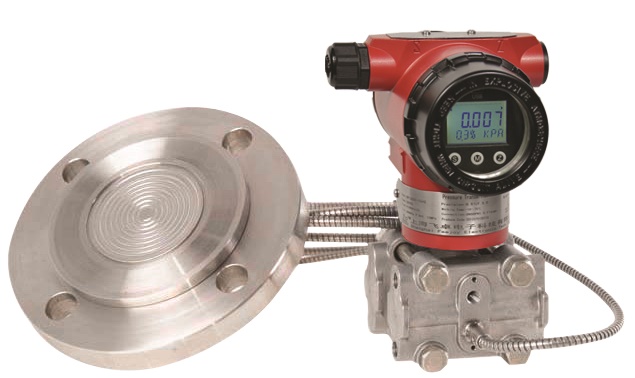
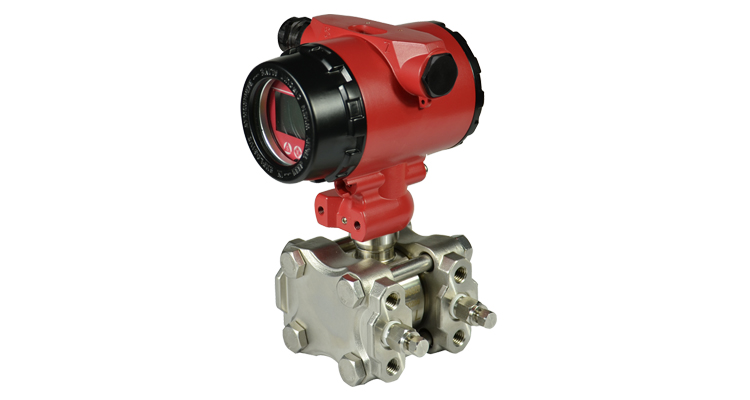
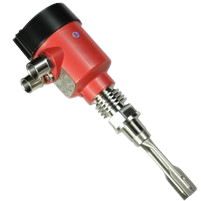
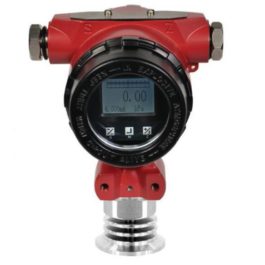
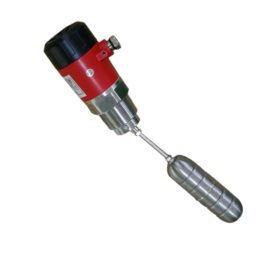
Reviews
There are no reviews yet.